Magnificent USD $3.69 Million Chinese Dragon Vase Tops Asia Week New York 2025
- Anthony Wu

- Mar 28
- 10 min read
Updated: Aug 6
I can’t believe another Asia Week New York has come to an end! For those who have been following my blog over the past few years, you’ll know that New York Asia Week takes place twice a year - once in March and again in September.
The March edition is typically the bigger of the two, drawing more visitors to the Manhattan area. There are more gallery openings, new museum exhibitions, and, of course, the buzz of larger Asian art gatherings and events.
It’s not just about what’s happening at the major auction houses like Bonhams, Christie’s, and Sotheby’s, and regional houses like Doyle, Hindman/Freeman and Heritage also hold exciting sales and previews during this time. It’s also a fantastic opportunity to reconnect with colleagues and catch up on what’s happening in the field.
The big reception at The Metropolitan Museum of Art - usually held a couple of days into the week - feels like a kickoff. It brings together hundreds of professionals in the Asian art world including curators, academics, dealers, auction house specialists, and consultants (like me!).
While Chinese art tends to dominate each year, there are always standout highlights and surprises from other categories. This year, we saw particularly strong results for Korean porcelain, Himalayan bronze sculptures, and Japanese woodblock prints.
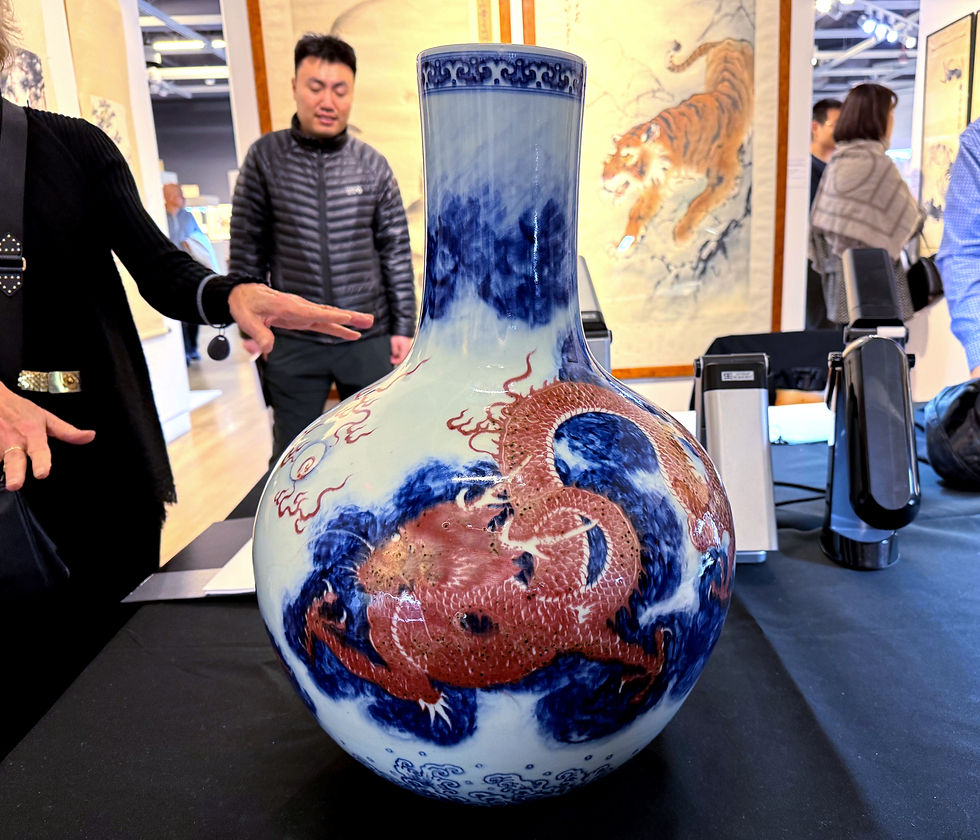
Image 1a. On incredible moment of the March 2025 edition of New York Asia Week unfolded at Bonhams, where a spectacular Chinese blue, white, and copper red tianqiuping vase with Qianlong mark and of the period (1736–1795) drew widespread attention and fierce bidding.
The term tianqiuping (天球瓶), meaning "heavenly sphere vase," refers to a rare and highly prized form, with top examples like this one made for the Imperial household. This monumental piece captivated collectors with its masterful depiction of three three-clawed dragons based on the work of famed Song Dynasty painter Chen Rong, executed in vibrant copper red, a notoriously difficult pigment to fire successfully. The dynamic dragons twist and soar through swirling clouds in pursuit of flaming pearls of wisdom, hovering above cresting ocean waves - a composition that radiates both technical brilliance and Imperial symbolism.
Adding to its appeal was the vase’s distinguished provenance, having remained hidden in Boston for over 50 years. Its ownership history includes:
Oriental Decor, Inc., Boston, Massachusetts – 29 October 1971
Rolly Michaux Gallery, Boston, Massachusetts
The Collection of Ron Rolly and Ronald R. Michaux
Despite a 'relatively' conservative estimate of USD 400,000/600,000, the vase ignited enthusiastic bidding and ultimately realized USD 3.69 million (approximately CAD 5.05 million), inclusive of buyer’s premium. This is a clear testament to the enduring value and rarity of Imperial Qing porcelain.
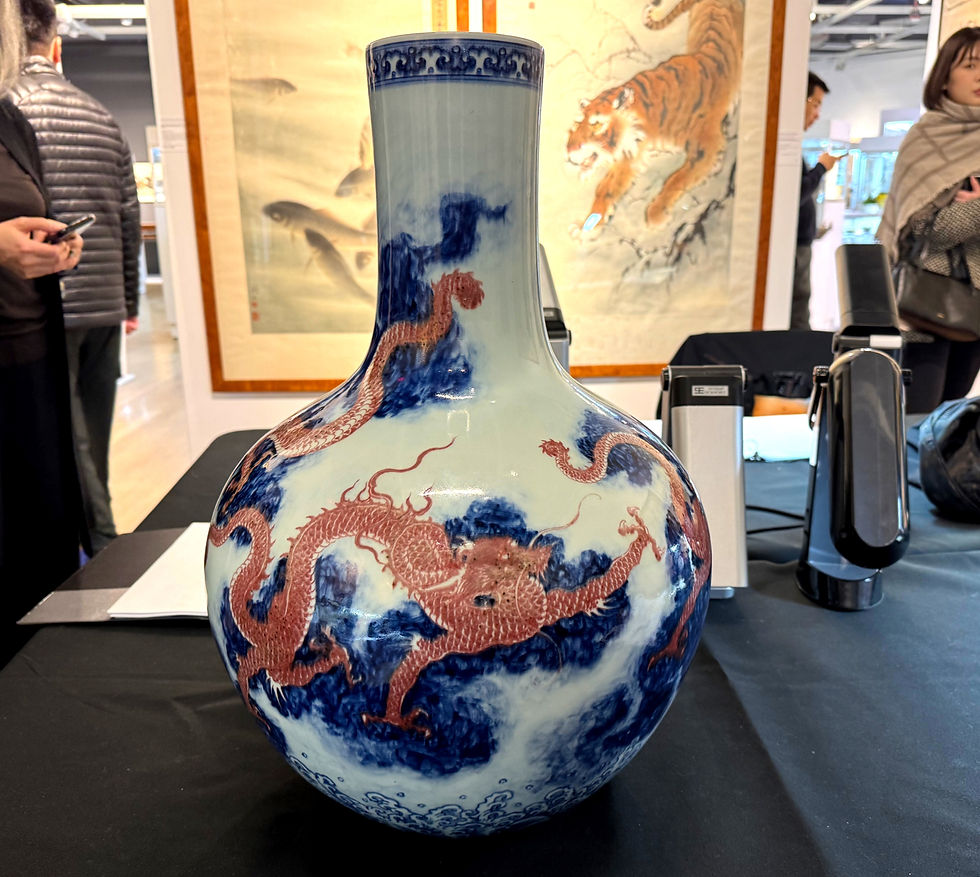
Image 1b. Another view of this magnificent tianqiuping vase and some of its smaller dragons.

Image 1c. The stylized six-character reign mark on the base of the tianqiuping which reads 大清乾隆年製 daqing Qianlong nianzhi and translates to made during the Qianlong reign of the Qing Dynasty.
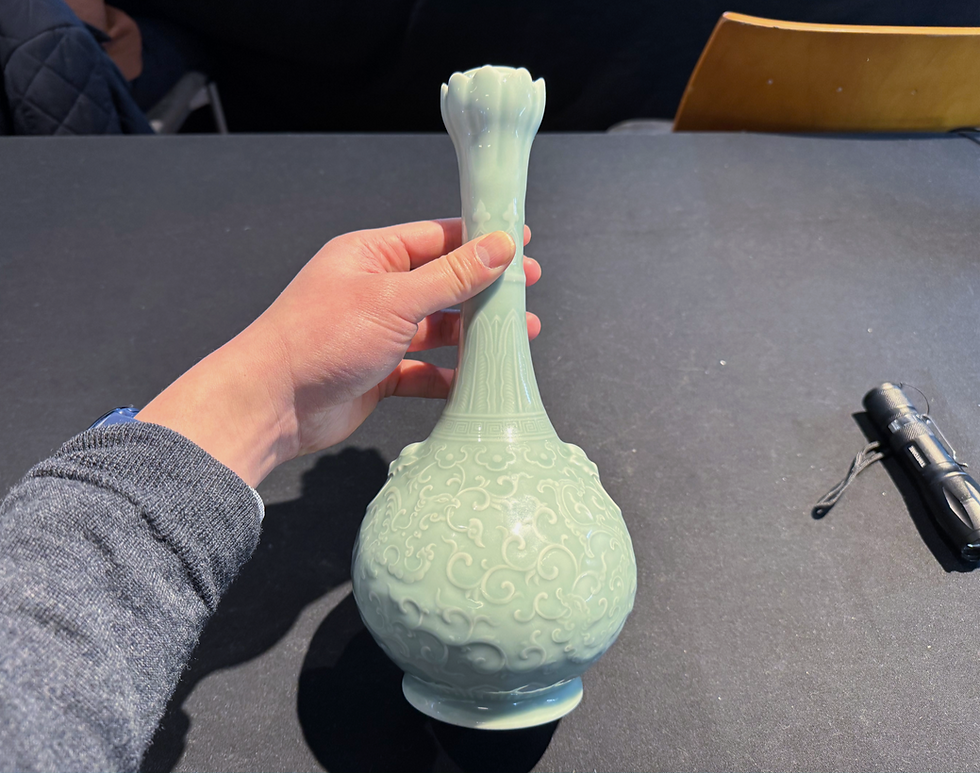
Image 2a. Also at Bonhams was this elegant Chinese celadon carved bottle vase with Yongzheng mark and period (1723-1735). The form is simply beautiful with its slender neck and bulbous mouth containing raised lotus petals. The body is carved with scrolling vines and archaistic dragons. This celadon vase had an auction estimate of USD 400,000/600,000 and achieved a very strong USD 1,754,500 (approximately CAD 2.4 million).
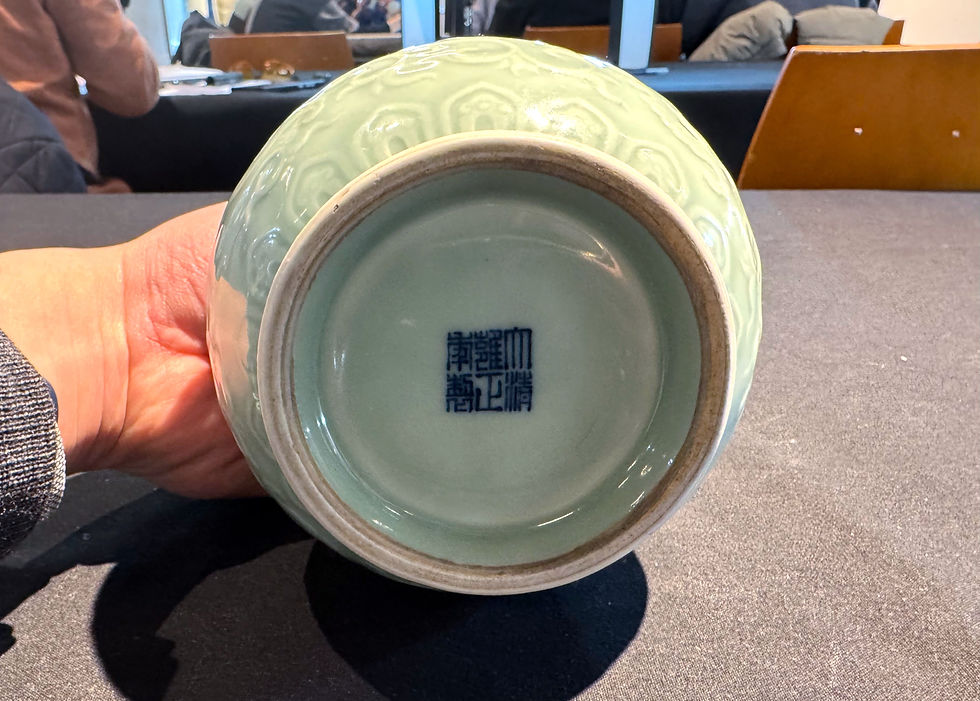
Image 2b. The base of the celadon vase and the reign mark 大清雍正年製 daqing Yongzheng nianzhi which translates to made during the Yongzheng reign of the Qing Dynasty.
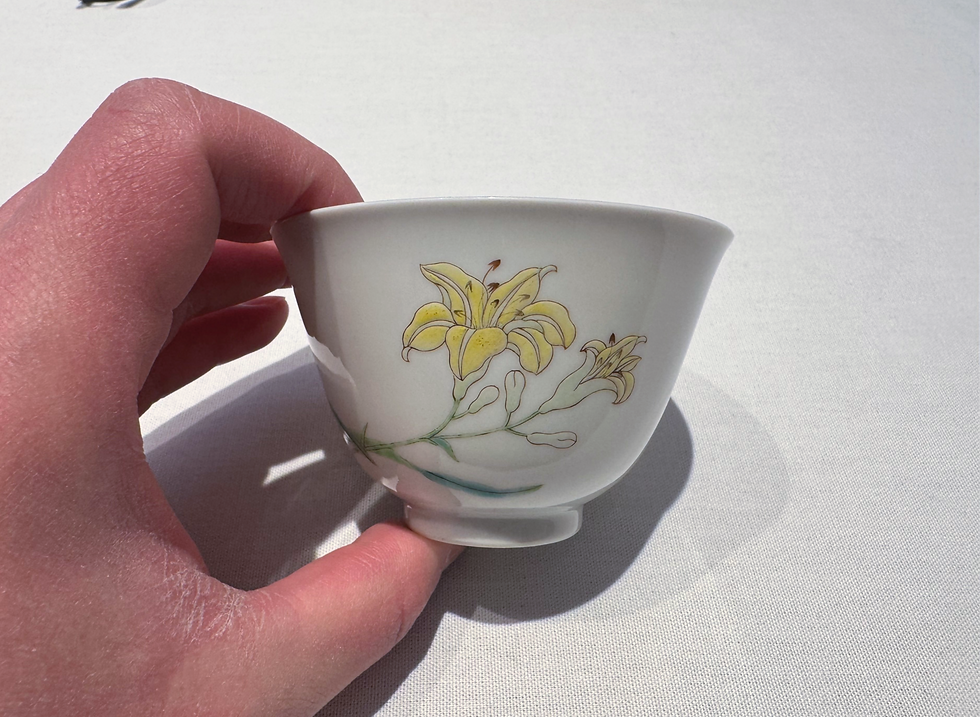
Image 3a. Over at Christie's, one of the most anticipated Chinese porcelain works during this season’s New York Asia Week was the legendary Chinese famille rose ‘daylily’ cup with Yongzheng mark and of the period (1723–1735). Known among collectors as the ‘Goldschmidt Cup’, this rare and delicate piece is widely considered one of the finest examples of Qing Dynasty porcelain artistry.
The cup was notably the cover lot of Sotheby’s Hong Kong’s 13 November 1990 sale (lot 40) and has long held near-mythical status in collector circles. It features what many connoisseurs regard as the most beautiful rendering of a daylily ever painted on Chinese porcelain. Executed in luminous famille rose enamels, the floral motif is strikingly naturalistic and elegant, a hallmark of Yongzheng-period refinement. The pattern is entirely unique as no other known cups with this exact floral composition have surfaced.
The daylily itself holds deep cultural resonance in Chinese art and medicine. Symbolizing longevity, the flower also carries medicinal associations, historically believed to ease ailments such as fever.
For many enthusiasts, including myself, handling the Goldschmidt Cup was not just a highlight of the week, but a personal milestone. As someone who has admired this object since first developing an interest in Chinese porcelain, experiencing it firsthand was a profound privilege.
True to the trend this Asia Week, the piece carried a conservative estimate of USD 400,000/600,000 (like so many other highlight objects this Asia Week!), but after spirited and prolonged bidding, it realized an impressive USD 1.381 million (approximately CAD 1.89 million), affirming its rightful place as a masterpiece of imperial porcelain.
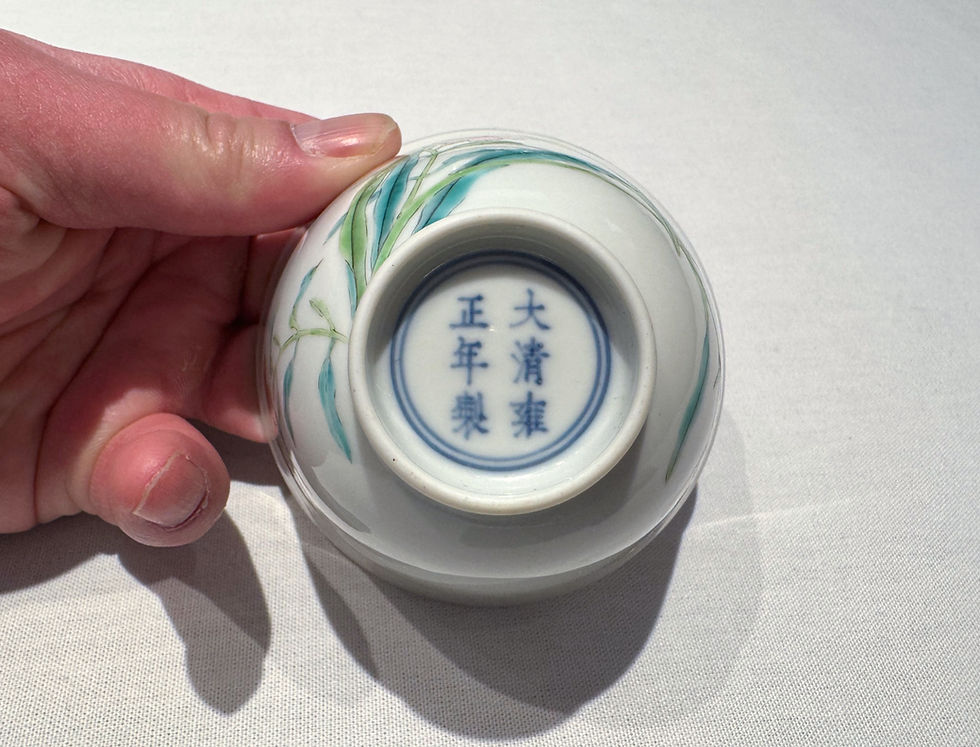
Image 3b. The base of the daylily cup and the reign mark 大清雍正年製 daqing Yongzheng nianzhi which translates to made during the Yongzheng reign of the Qing Dynasty. You can also see some of the leafy stems of the flower in various tones of green.
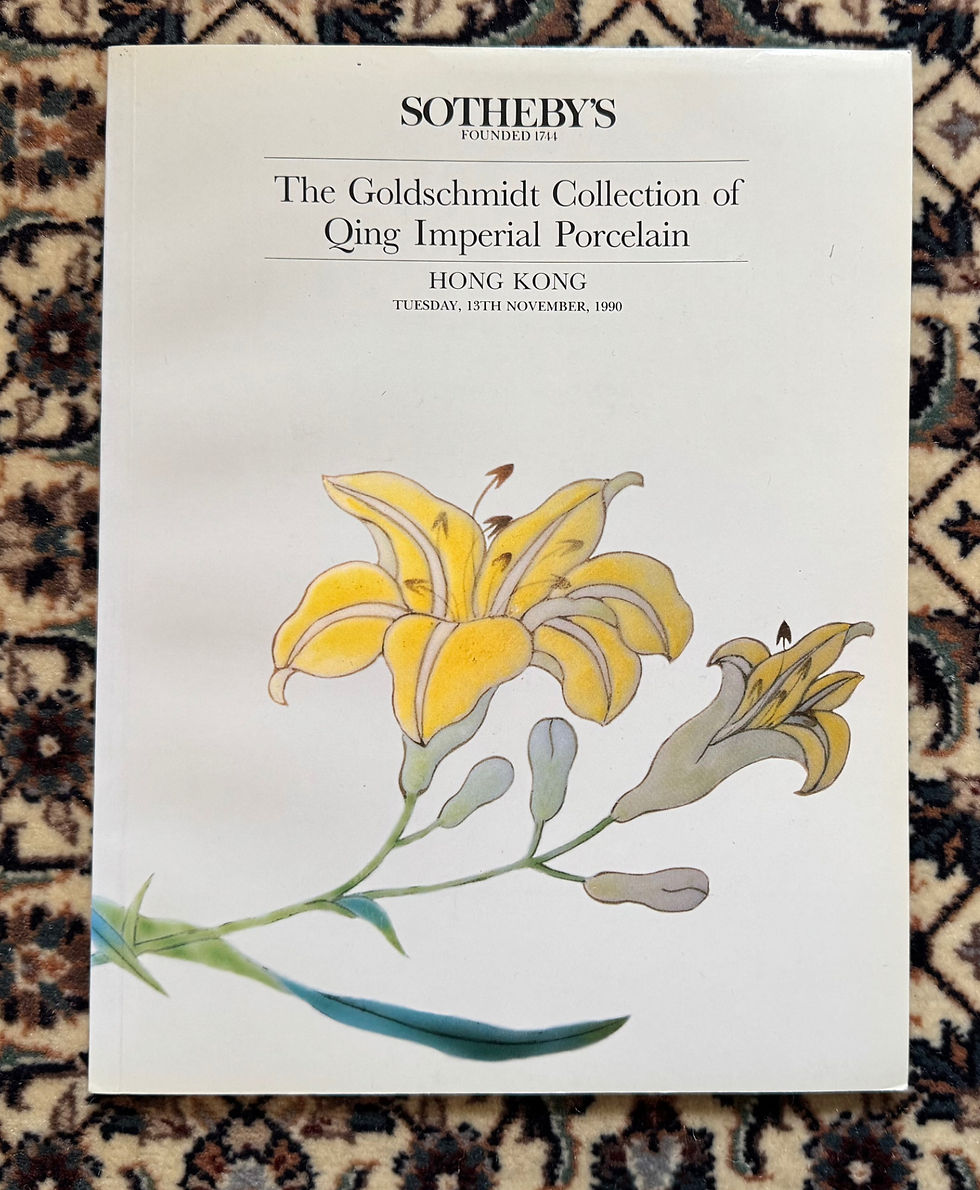
Image 3c. Here is my old 1990 Sotheby's catalogue featuring a detail of the Yongzheng daylily cup.

Image 4a. Also at Christie's New York was another hisorical cover lot, this one featured in the Sotheby's Hong Kong sale on 15 May 1990. The porcelain I am carefully balancing with one hand is a large Chinese blue, white and iron red 'dragon' dish with Qianlong mark and period (1736-1795).
The central design displays a large Imperial dragon with a flaming pearl of wisdom. To the sides are other large and well-detailed variations of Imperial dragons. This large dragon dish sold for USD 2,772,500 (approximately CAD 3.8 million) against an auction estimate of USD 1.2/2.5 million.

Image 4b. The reverse and reign mark of the large dragon dish. The six-character mark 大清乾隆年製 daqing Qianlong nianzhi translates to made during the Qianlong reign of the Qing Dynasty. There are four dragons along the edges which brings the dish's total number of dragons to nine. Nine dragons in Chinese art usually suggests an Imperial provenance.
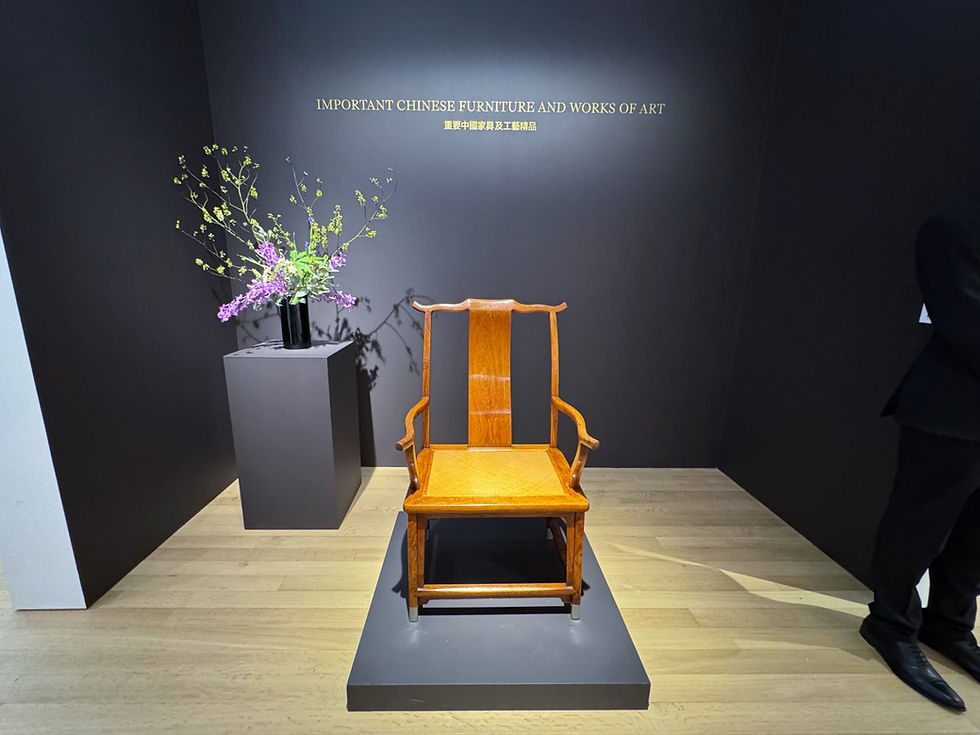
Image 5. Christie's New York also featured a large selection of classical Chinese furniture. One of the impressive highlights is a large huanghuali 'official's hat chair' from the 17th Century. Huanghuali 黃花梨 is a prized hardwood that used to be harvested on the tropical island of Hainan 海南 in China's southwest region. Despite being extinct during the early 20th Century, the wood when aged/cured has a beautiful honey tone and immaculate graining.
This particular chair was extensively published and was in the permanent collection of the now closed Museum of Classical Furniture in Renaissance CA from 1990 to 1995. This huanghuali chair was estimated at USD 800,000/1.2 million and ended up selling for USD 3,256,500 (approximately CAD 4.5 million).
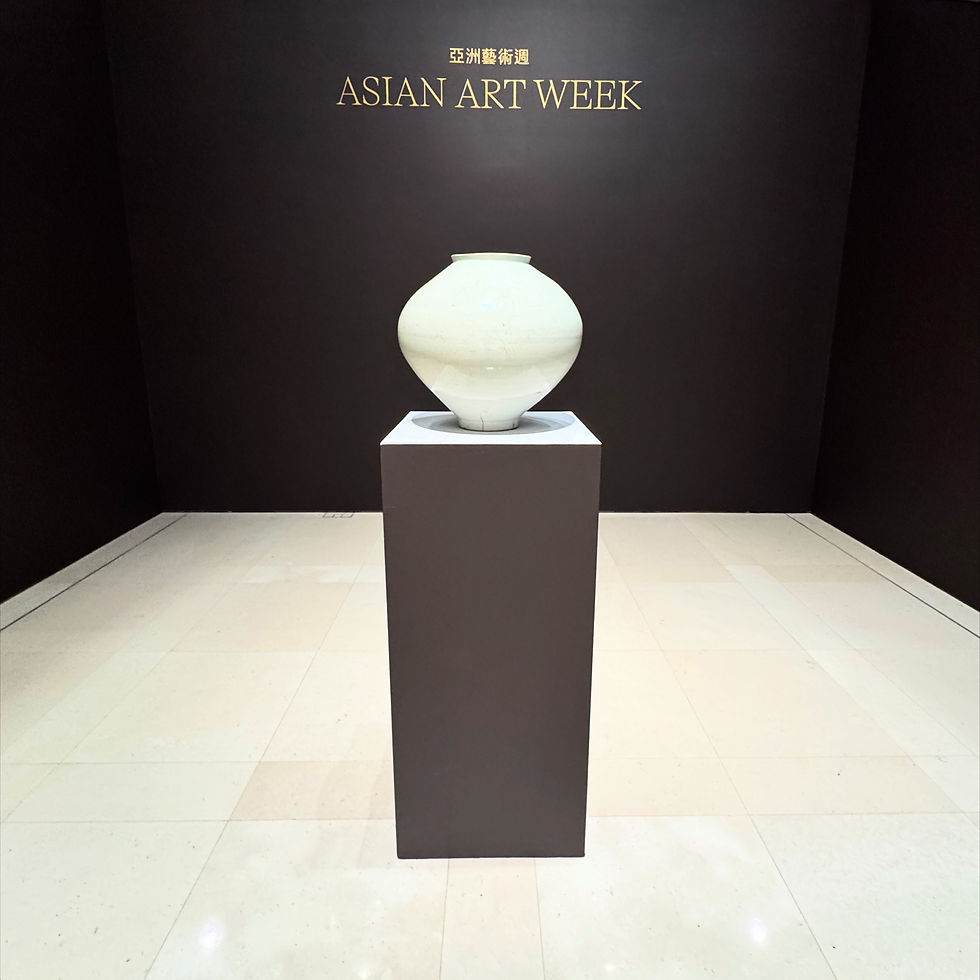
Image 6a. In the Korean Art department at Christie’s New York, one of the most prized pieces during Asia Week March 2025 was a large white-glazed ‘moon jar’ from the 18th century, Joseon Dynasty. Moon jars (dalhangari) have seen a dramatic rise in desirability over the past decade, with top examples routinely fetching over USD 1.5 million (approximately CAD 2.07 million) at auction.
Moon jars have become synonymous with the cultural identity of Korean ceramics, celebrated for their monumental scale (at least 40 cm in height), even white glaze, and distinct, imperfect symmetry. They embody the neo-Confucian aesthetics of purity, modesty, and naturalness. Each moon jar is unique, often bearing subtle variations in shape, asymmetry, and firing flaws, qualities that are not only accepted but revered.
Their abstract beauty inspired modern Korean masters such as modernist painter Kim Whanki (1913-1974), who praised them during the 1960s for their spiritual simplicity.
This particular example, measuring 45 cm in height, was given a place of prominence at Christie’s - it was displayed at the base of the grand staircase, commanding attention, admiration and numerous photo ops.
The moon jar was offered with a pre-sale estimate of USD 1.8/2.5 million, but after active bidding, the achieved a final price of USD 2.833 million (approximately CAD 3.88 million). Its sale underscores the moon jar’s continuing resonance as a national icon of Korean art and a coveted treasure in the global market for Asian antiquities.

Image 6b. Side view of the Korean moon jar at Christie's New York and all of its 'perfect' imperfections on display.

7a. Over at Sotheby's in New York's Upper East side was another strong contigent of Chinese porcelain pieces. Many of the top highlight objects were deaccessioned from major institutions.
This present example, a rare famille rose 'floral' cup with Yongzheng mark and period (1723-1735) was originally donated to Pittsburgh's Carnegie Museum of Art in 1955, and sold to benefit their acquisition fund. The quality of the painting is absolutely exquisite and its original owner was George Hathaway Taber (1859-1940), a businessman who made his money with Gulf Oil. He formed one of the most remarkable Chinese art collections that existed in Pennsylvania.
This cup was estimated at USD 200,000/300,000 and sold for USD 1.041 million (approximately CAD 1.44 million).
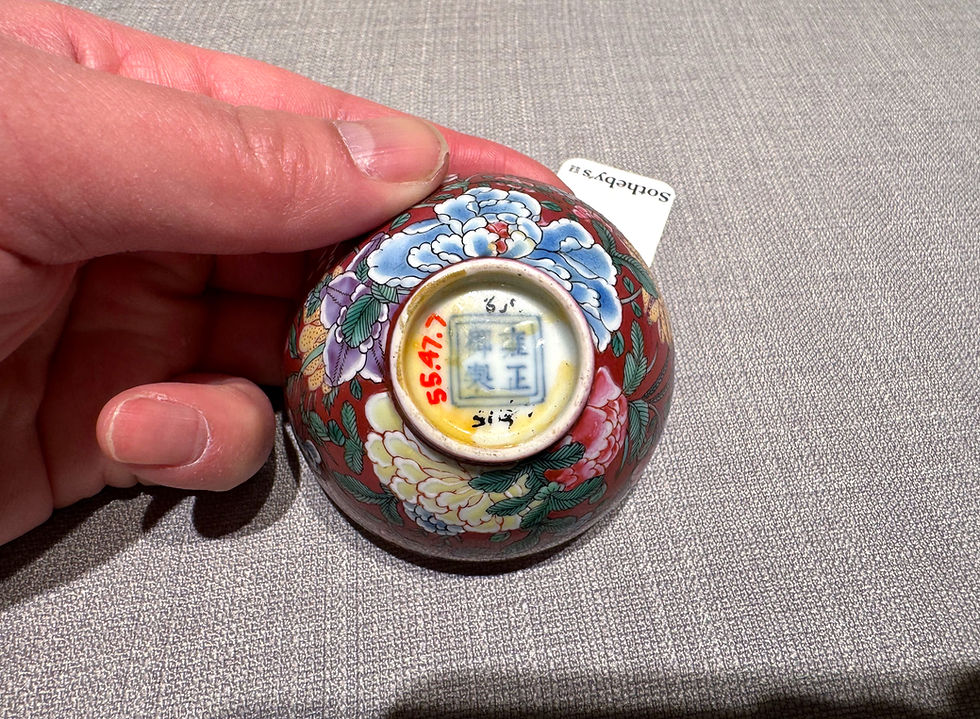
Image 7b. The base of the small famille rose cup and the four-character reign mark 雍正御製 Yongzheng yuzhi which translates to 'by Imperial order for the Yongzheng Emperor'.
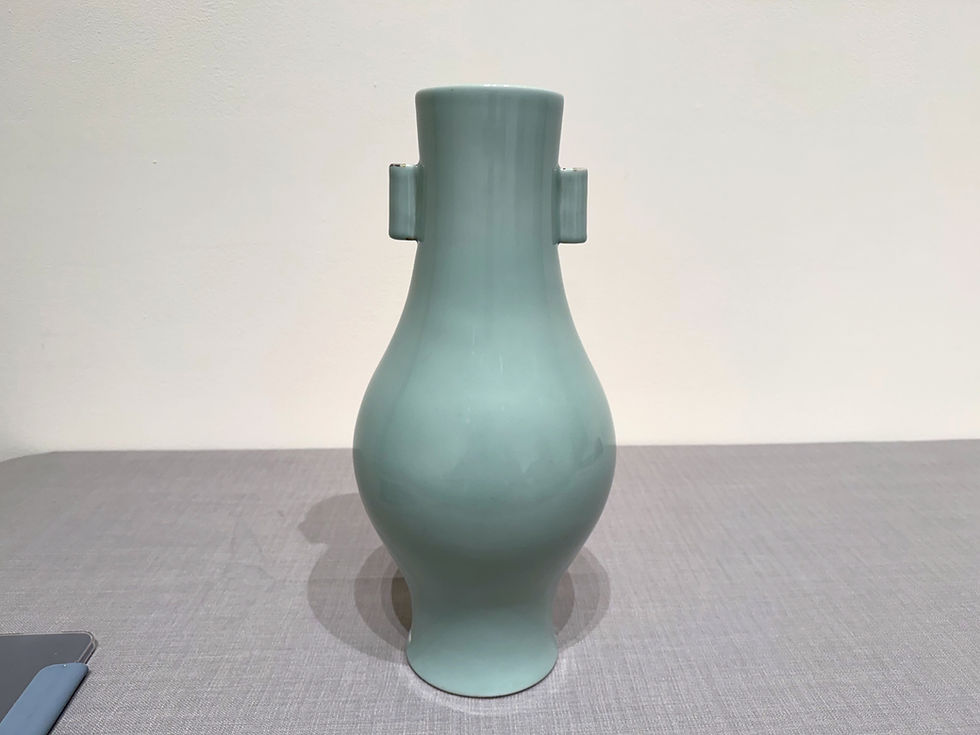
Image 8a. Also at Sotheby's New York was this elegant Chinese celadon-glazed hu vase with Yongzheng mark and period (1723-1735). This piece was one of a pair at the Newark Museum and was donated to the institution from the Collection of Herman A. E. (d. 1951) and Paul C. (d. 1951) Jaehne.
The hu vase was estimated at USD 600,000/800,000 and was quite remarkable to handle because of its size. Its slender shape was based on bronze age examples and the glaze is extremely fine and even. There was a lot of interest in this piece and it eventually realized USD 1,079,500 (approximately CAD 1.5 million) to benefit the museum's acquisition fund.

Image 8b. The base of the celadon hu vase and the reign mark 大清雍正年製 daqing Yongzheng nianzhi which translates to made during the Yongzheng reign of the Qing Dynasty. The two holes on the bottom was so that this large vase can be fastened onto a base.

Image 9. In the Himalayan sale at Sotheby's New York was this massive Central Tibetan gilt bronze seated figure of the Historical Buddha Shakyamuni. This Buddha is from the 14th Century and probably originated from the famous Shalu monastery, a place known for its transcendental instruction and scholarly learning, in the Shigatse province of Central Tibet.
This Buddha is huge and has a height of 70 cm. It also contains graceful features in the face and the right hand that is in the earth-witness gesture. The details of the lotus petals are also delightful. Estimated at USD 600,000/800,000, there was much bidding for this impressive Buddha where it ended up selling for USD 2.978 million (approximately CAD 4.1 million).
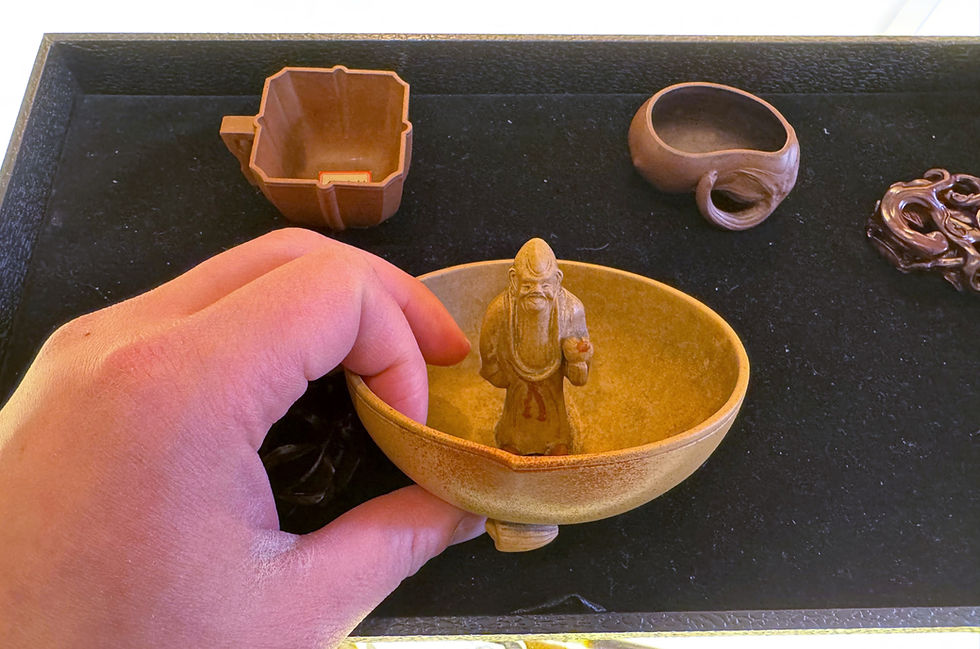
Image 10. At the regional auction house Hindman-Freeman, their main highlights came from three lots of Chinese Yixing pottery that sold for a combined total of USD 636,500 (approximately CAD 880,000).
Each of these finely rendered vessels are attributed to the 17th Century artist Chen Mingyuan 陳鳴遠 and come from the esteemed collection of Mr. Jay Butterman. The potter artist is best known for making Yixing wares in refined shapes that catered to a scholarly audience. The one I am holding contains a realistic rendering of the Daoist god of longevity Shoulao standing within a peach-form vessel.
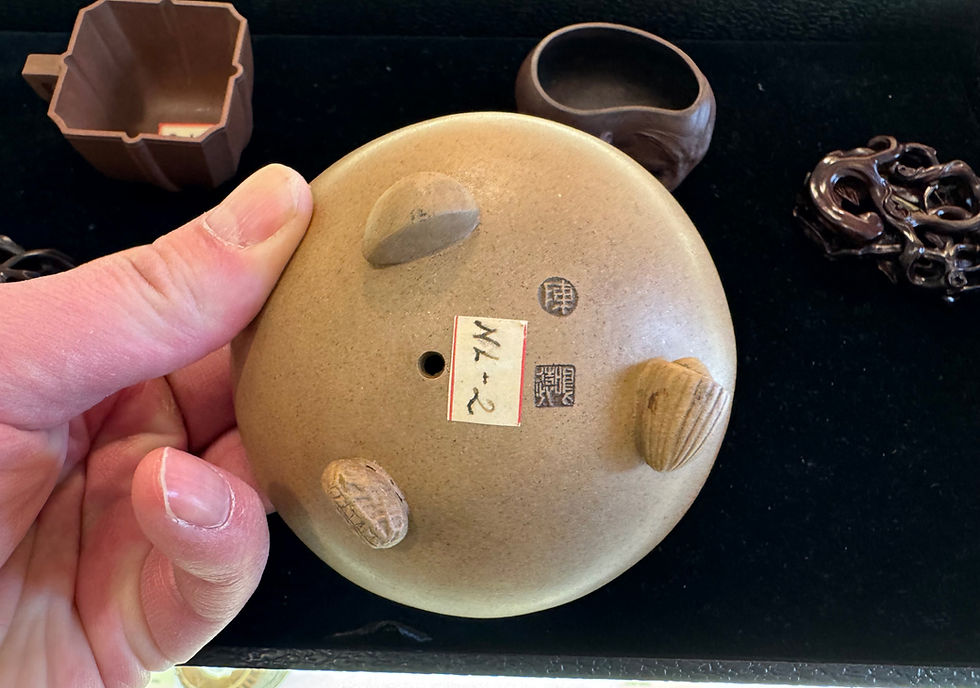
Image 10b. The base of the vessel and the impressed seal marks of Chen Mingyuan. The legs of the cup are rendered to look like various nuts.

Image 11. And over at Heritage Auctions on Park Avenue, an extensive collection of Japanese woodblock prints from the Nelkin Collection were featured. Ruth Sylvia Nelkin (1927-2022) was an ardent collector of Japanese traditional ukiyo-e (floating world) and shin hanga (new wave) woodblock prints. She purchased most of her prints from Christie's and Sotheby's New York during the 1980s and 1990s.
One of the stars of her collection was Katsushika Hokusai's (1760-1849) legendary 'Great Wave Off Kanagawa'. This is one of the most recognized images on the planet as it shows a large and powerful wave endangering the lives of fishermen with Mount Fuji in the background. This print was published circa 1931 and comes from Hokusai's seminal series 'The Thirty-Six Views of Mount Fuji. This particular example was estimated at USD 100,000/150,000, and despite some condition issues, sold for USD 425,000 (approximately CAD 585,000).
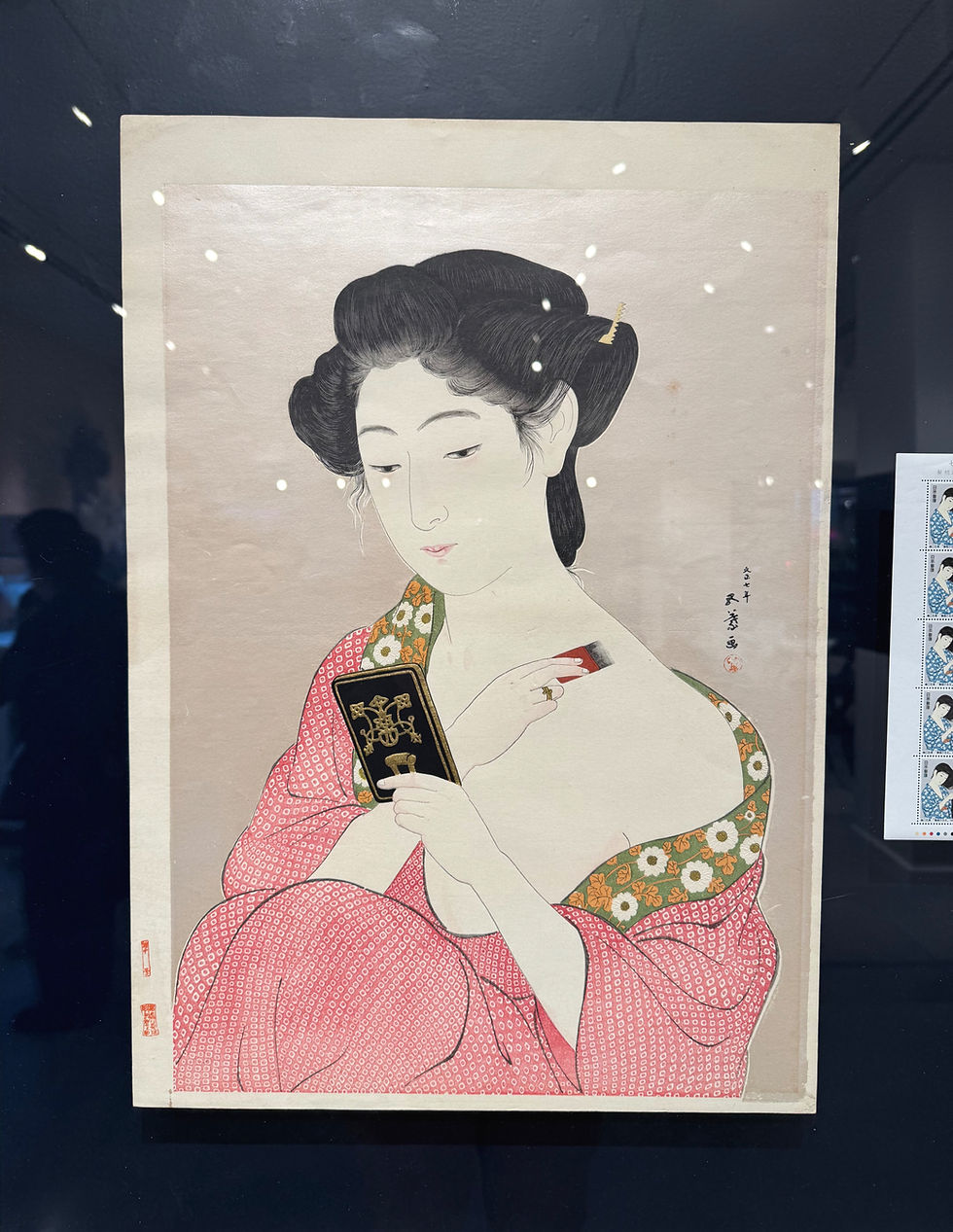
Image 12. From the shin hanga section of the Nelkin Collection was this famous bijin (beauty) print by Hashiguchi Goyo (1880-1921) of a 'Woman Applying Powder'. This very sensual and intimate image depicts early 20th Century Japan's vision of an idealized woman. This print was highly desirable and ended up selling for USD 17,500 (approximately CAD 24,000) against a 'lowball' estimate of USD 2,000/3,000.
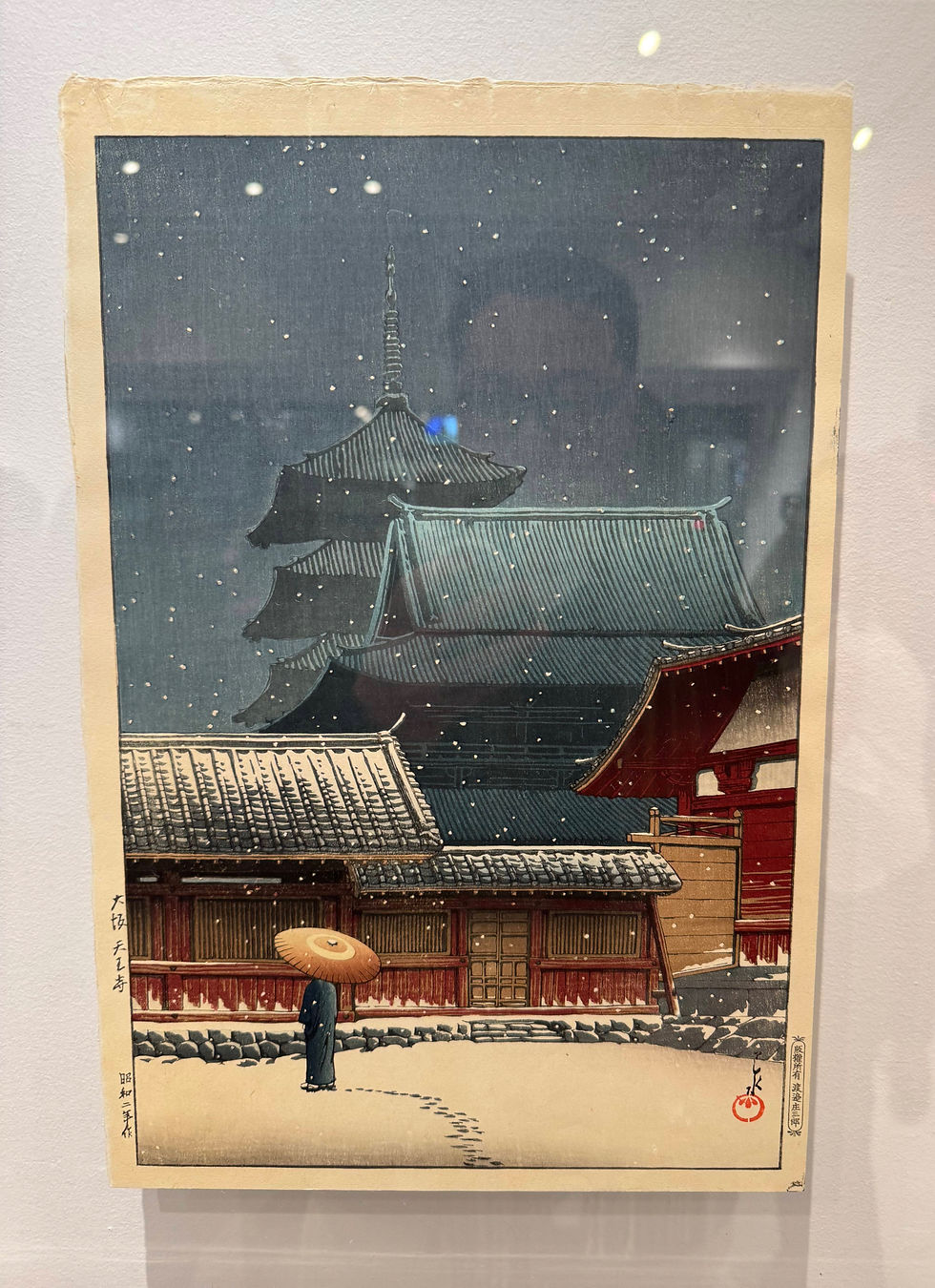
Image 13. Finally at Heritage Auction was one of my favourite Japanese woodblock images of all time, 'Tenmō Temple, Osaka' by shin hanga artist Kawase Hasui (1883-1957). This scene published in 1927 depicts a solitary figure holding a traditional umbrella and with his back turned. He stares at the large temple complex while surrounded by a light snowfall.
If you have been reading my blogs, I have a profound love for Hasui's works and have written extensively about them in the past. This type of image - depicting a single enigmatic character - is a recurring theme and captures a romantic vision of a modernizing Japan. Tenmō Temple is a favourite amongst collectors and ended up selling for USD 23,750 (approximately CAD 32,500) against an estimate of USD 3,000/5,000.

Image 14a. And last but not least are some photos of the Asia Week New York reception at the Metropolitan Museum of Art! In addition to the myriad speeches, tasty snacks and profuse amount of alcoholic beverages, it was also great to see the Asian art community all in one location. The speeches take place in front of the massive Yuan Dynasty Buddhist fresco within the Chinese sculpture court on the museum's second floor.

14b. It was also a lot of fun to wander around the Met Museum during their Asia Week reception. On display was their newest exhibition 'Recasting the Past: The Art of Chinese Bronzes, 1100-1900'. This famous piece pictured here is a large gilt bronze figure of Mahamayuri on a Peacock with Xuande mark and period (1426-1435). Mahamayuri is the Chinese Peacock Wisdom King and a a Buddhist protector against poison from snakebites. It is on loan from the Ethnologishes Museum in Berlin.
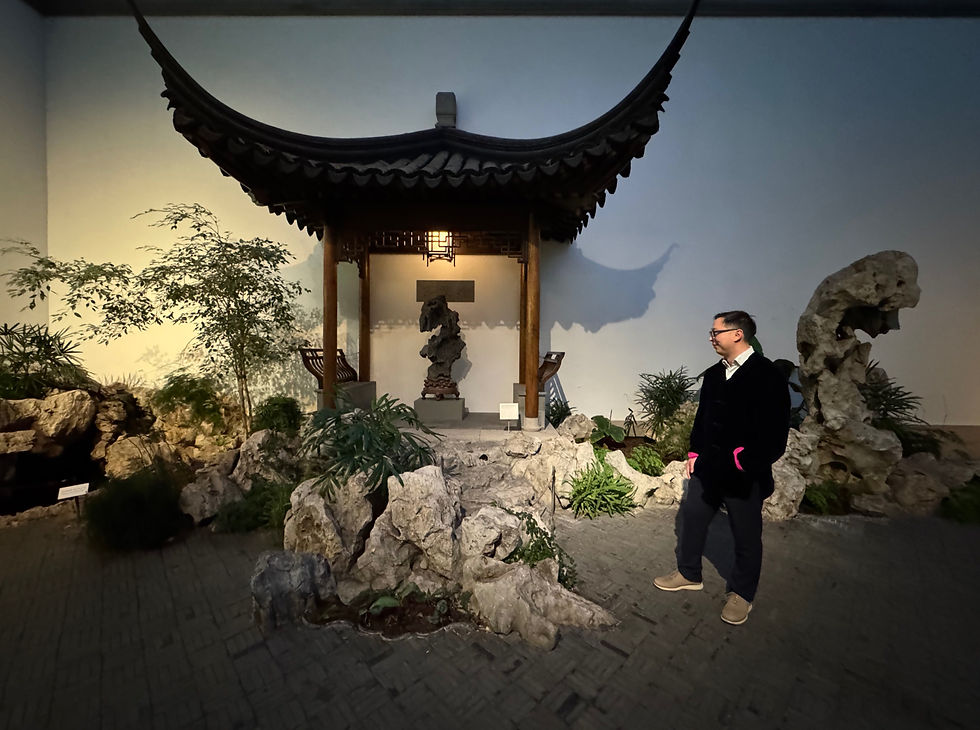
Image 14c. There were also plenty of photo ops during the Asia Week reception at the Met Museum. Everyone is wearing their fancy Asian-themed attire and taking full advantage of this event. In this photo I am in the Ming-inspired Chinese garden at the Astor Court striking a pose.
Thank you for reading this latest blog! I am currently in Vancouver setting up my latest Asian art online sale at Heffel which will run from April 3 to 24. Immediately afterwards I will be flying off to Hong Kong to view the major Chinese art auction previews at Bonhams, Christie's and Sotheby's. AND right after that will be a trip to San Francisco for my inaugural visit to the Asian Art Museum.
In the meantime, please check out my latest Asian art online sale at Heffel, and if you have any questions or inquiries about my Asian art valuations or appraisal services, please let me know! You can also follow my most recent Asian art adventures through my Instagram account @anthonywuart.



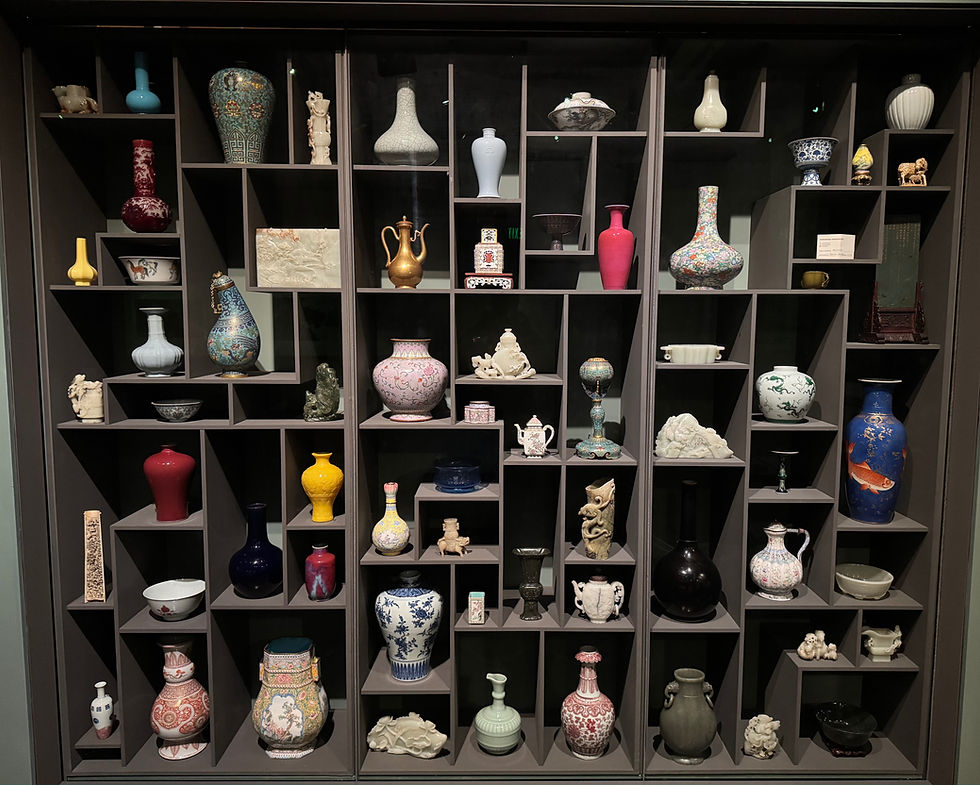
Comments